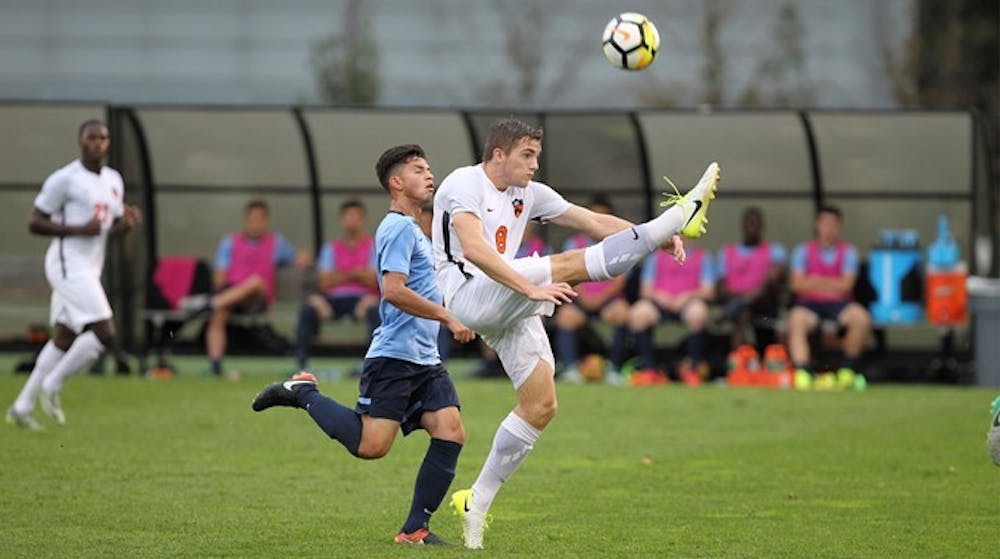Men’s soccer heads into the weekend with a critical Ivy League matchup on the books against Cornell. Last weekend’s outing with Harvard saw the Tigers (3-6-4) settle to a 1-1 draw in Cambridge, while the Big Red, sitting at third in the conference, herald a 7-5-2 overall record coming off a 1-0 overtime home victory over Brown.
Saturday’s result did well to highlight both the muscle and stumbling blocks of the current Princeton outfit, with Harvard’s Philip Hausen neutralizing first-year Gaby Paniagua’s maiden goal with just five minutes left in regulation time. With Princeton outshooting the opposition 24-21 while maintaining defensive stability with a continuation of their season-long first-half shutout streak, it seems at first glance that the team is heading in the right direction as the campaign enters its final stages. Yet the Tigers will have rued their missed chances, as shortcomings on the finishing, pressing, and organizational fronts perhaps signal the need for formational and structural changes.
As demonstrated by the late goal, defending on set pieces comprised the principal thorn in the Princeton side. The sheer number of corners and free kicks conceded — the last game ending 11-4 in Harvard’s favor — combined with a propensity for letting the ball simmer into the box, afforded the Crimson far too many preventable goal-scoring opportunities. A look at seasonal trends yields similar concerns, as the other Ivy League fixtures saw Columbia, Brown, and Dartmouth also dominate the corner counts 8-0, 11-2, and 16-4, respectively.
Reconciling the set piece ratio with last weekend’s shot advantage may speak to discrepancies in the quality of chances taken by the two teams. The Tigers generally sought to close attacking opportunities quickly, as is characteristic of their counter attacking style; however, this often gave rise to losses of possession or premature efforts from outside the area. Harvard, meanwhile, seemed more patient in the build-up and was thus able to test the goal with greater collateral.
Dispersion and isolation when attacking on the counter and defending in transition thus indicate that the team may be getting caught out on shifts in play. In anticipation of a counterattack, defending in a high block would consolidate the press and do well to stop the supply into the middle even before such opportunities arose. Occasions where the Tigers did press in sync yielded more threatening efforts, as they were able to capitalize on defensive errors and run in on goal with a personnel advantage. At the other end, meanwhile, Princeton simply didn’t have the numbers needed to close down opposing attackers, something which Harvard did very well as with Colvin’s breakaway near the hour mark.
But while these setups can be achieved through greater swiftness in transition, perhaps a move away from the 3-5-2 formation would aid as well. A four-at-the-back formation would thin out the middle of the pitch, yet simultaneously provide more stability at the front and back without the need to make such drastic shifts. Combined with more organized defending off of set pieces — nearly all of which cut through the defense in Saturday’s match — executing such a plan against Cornell would perhaps tighten the defense while also creating more opportunities up top.
The men’s team will look to capitalize on Cornell’s poor away form to grab their first Ivy League win. The match will take place at Myslik Field on Oct. 27 at 5 p.m.








